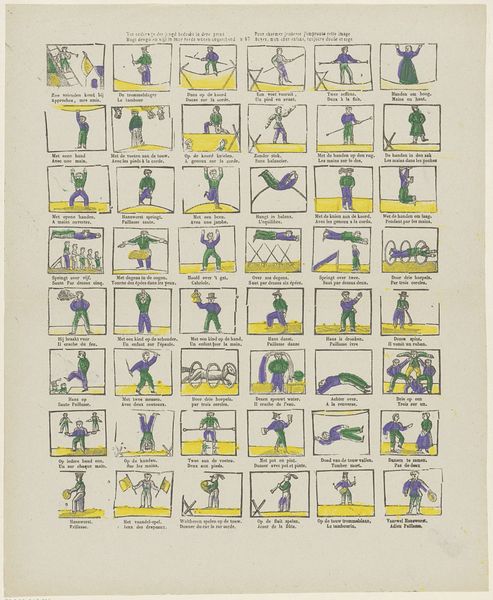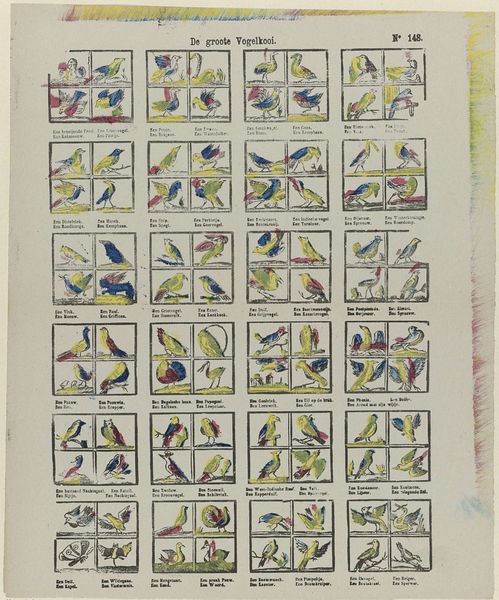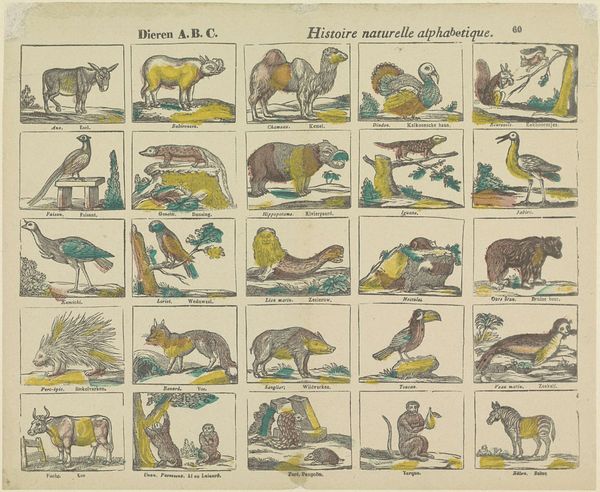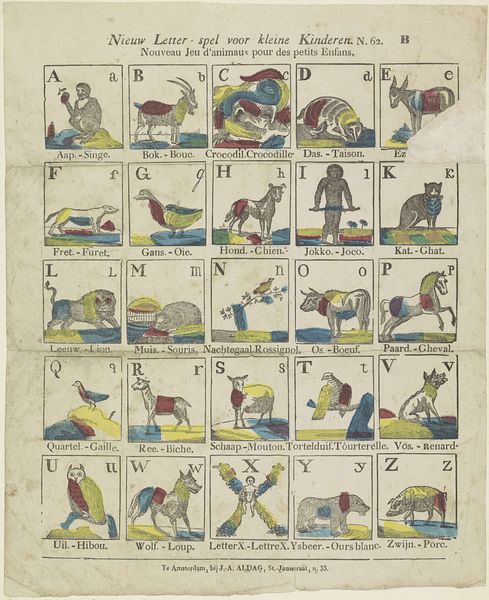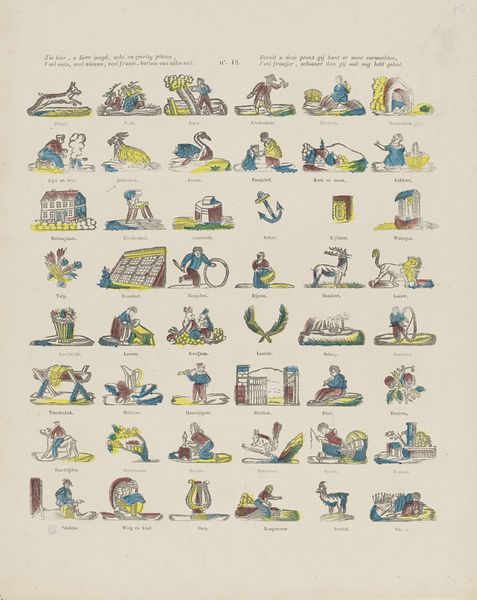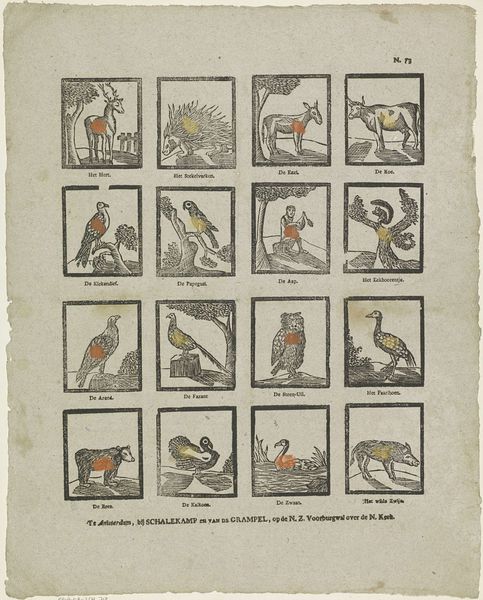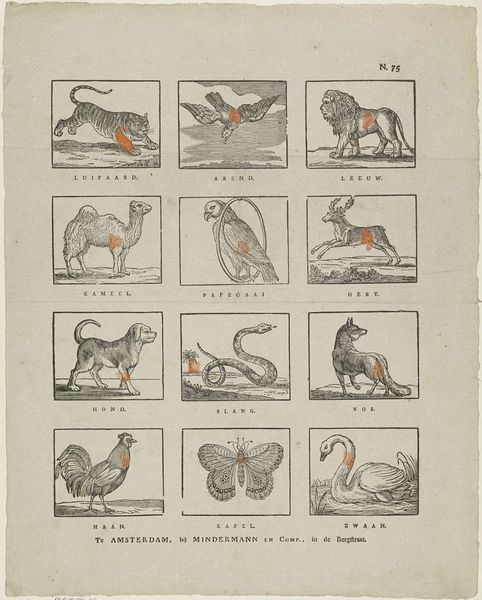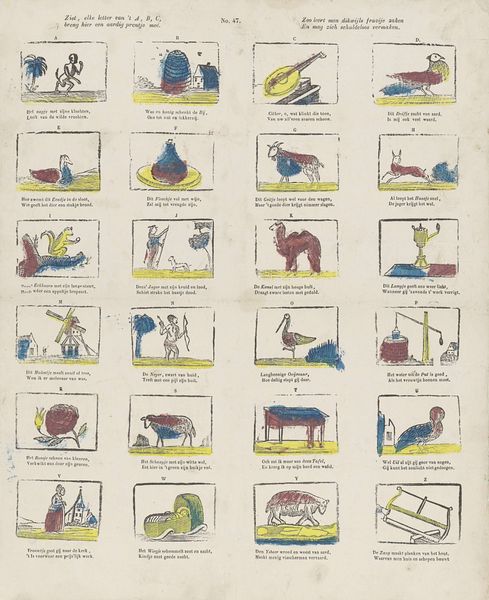
Het dierenrijk, is lieve jeugd, / Hier afgebeeld tot uwe vreugd, / Gij kunt gerust met hen verkeeren, / De wreedste zelfs zal u niet deeren 1848 - 1881
0:00
0:00
# print
#
figuration
Dimensions: height 398 mm, width 308 mm
Copyright: Rijks Museum: Open Domain
Curator: This print, titled "Het dierenrijk, is lieve jeugd, / Hier afgebeeld tot uwe vreugd, / Gij kunt gerust met hen verkeeren, / De wreedste zelfs zal u niet deeren" translates to “The animal kingdom is dear youth / pictured here for your joy, / you can mingle safely with them, / even the most ferocious won’t hurt you”. Created sometime between 1848 and 1881 by Lutkie & Cranenburg, it is held at the Rijksmuseum. Editor: What a delightful menagerie! Each creature is compartmentalized within its own square, and this orderly grid creates an unexpectedly calming visual rhythm. Curator: Indeed. Structurally, the repeated geometric forms against the off-white ground create a pattern, a sort of taxonomic architecture if you will. Note the consistency in the limited color palette – mostly ochre yellow, red, and indigo. The application is rudimentary yet deliberate, directing the eye and unifying the image. Editor: The colors themselves possess significance, certainly. The vibrant yellow of a lion or a monkey invokes qualities like power and knowledge, even as the minimal use of color implies simplification and control for a youthful audience. The animals become vehicles of larger ethical considerations. Curator: Precisely. And these colors, bound by firm contours, work to delineate each creature while underscoring the image’s two-dimensionality, a characteristic integral to printmaking as a medium. The flatness emphasizes the overall design, focusing our attention on how the images relate to one another, more than the mimetic qualities. Editor: It’s true; one cannot ignore that this imagery must have taught youngsters about far-off animal kingdoms. Through simple and idealized representations, this print delivers its meaning; these creatures may represent moral figures that were well known to children through folklore, like the fox or the lion. Each square invites a closer encounter and promotes imaginative interaction. Curator: And notice the deliberate labeling below each square; the application of written word combined with representational imagery completes the sign, in a semiotic sense. Language tethers image, which is a crucial operation, particularly within the didactic framework of the work. Editor: To sum up, the symbols here evoke a time when children might find delight in taming wild nature within the imagination, each color and contained shape working in harmony. Curator: From my viewpoint, the power rests in how structural economy manifests in complex semantic richness.
Comments
No comments
Be the first to comment and join the conversation on the ultimate creative platform.

